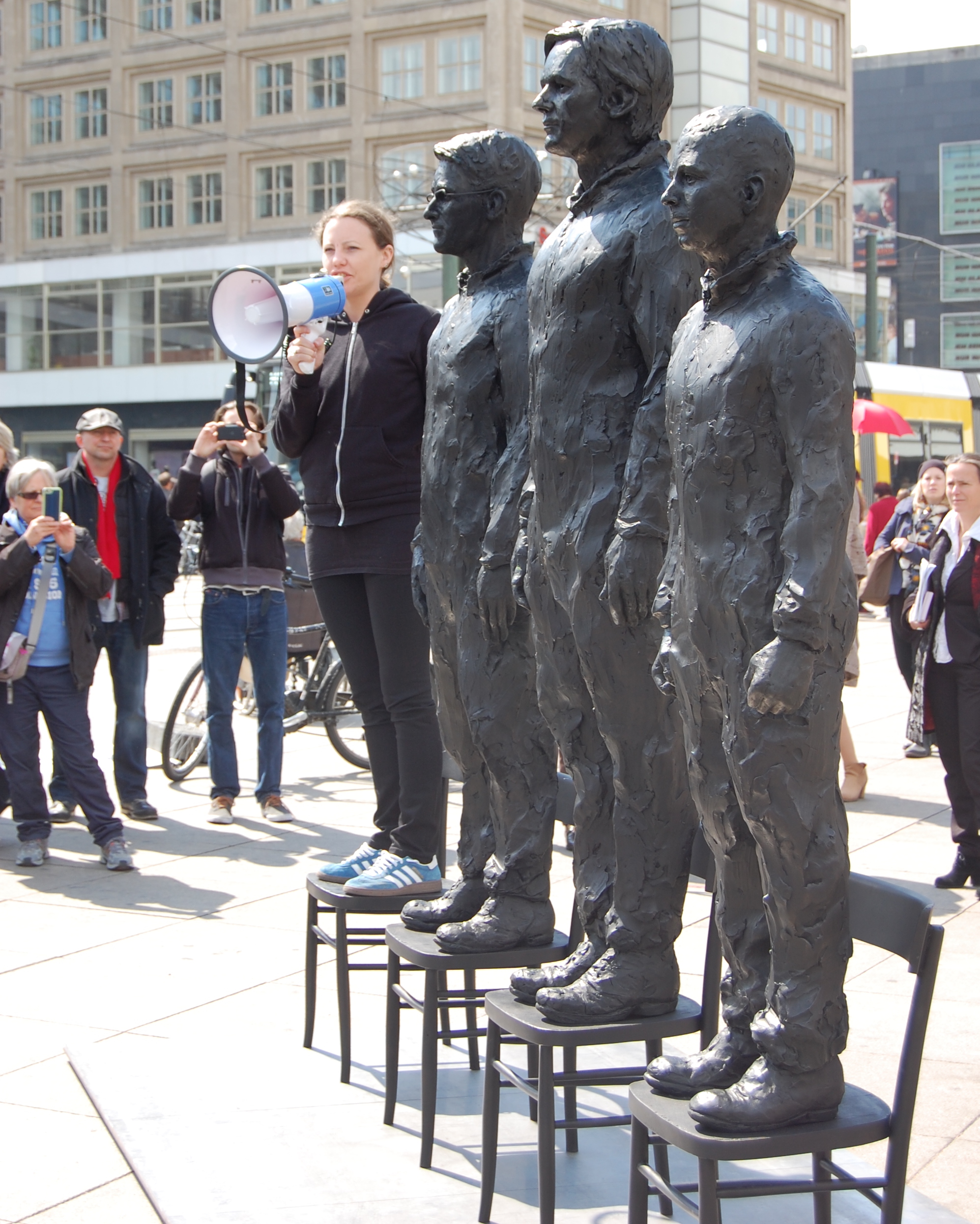The Privacy Movement and Dissent: Art
- 28 juni 2017
In 2013-2015 I made a snapshot of the Berlin-based privacy movement. Join me in exploring the correlation between art, activism, and the privacy movement.
Last weekLast week I wrote about the role of whistleblowing in the privacy movement. we looked at how the privacy movement expresses dissent through whistleblowing. This week I will discuss a completely different realm: art.
Although there are relatively few movement members involved in the actual process of creating the art, it does affect the movement as a whole. Art reflects the movement’s beliefs and is used as a weapon of resistance against injustice. This article will first explore theory on the correlation between art, activism, and social movements. Subsequently, it will look at art as an expression of dissent that is specific to the privacy movement. This will be done through analyzing two art projects: Panda to Panda and Anything to Say?.
Art as Activism
How art and activism can go hand in hand is explained in the book Art and Activism in the Age of Globalization.Goris, Gie. Art and Activism in the Age of Globalization. Ed. Lieven de Cauter, Ruben de Roo, and Karel Vanhaesebrouck. Rotterdam: NAi Publishers, 2011. Starting point in the book is the term “subversivity”, which is defined as “a disruptive attitude that tries to create openings, possibilities in the ‘closedness’ of a system”. Subversivity is characteristic to most subcultures, as they are “fundamentally deviant, even hostile towards the dominant system or hegemonic culture”. The aim of subversivity is to create a space for alterity, deviance, truths that generally must remain hidden, the forbidden, nonconformity, and the undermining of convention and tradition. It is also closely related to a range of concepts such as criticism, dissent, protest, resistance, and activism. Subversion can come in three different, autonomous forms. First, the subversion of truth undermines accepted theories, dogmas, and myths. Second, aesthetic subversion can, for example, be found in modern art’s subversion of traditional art. Last, ethico-political subversion undermines or overthrows authority. This is subversion as it is generally understood and also the most fitting to the privacy movement in particular.
Art and Activism in the Age of Globalization also mentions three requirements that should be met in order for art to help subvert dominant power. First, art has to strive to retain and cultivate its proper voice. That proper voice is cultural, as cultural power defines how we understand the world around us. The challenge in this is to not limit this to individuals or areas of society that already share similar views, but instead reach and convince those who do not. Second, for art to be subversive, it needs to move away from the context it originally belongs to, for example a museum, to a place where power is located and decisions are made, for example the street, the (mass) media, or religious spaces. Third, art cannot be subversive unless it is well informed about the conflicts that influence our modern day world. Contributions to vague terms such as peace, tolerance, and solidarity are not enough to make a true impact.
The Value of Art for Social Movements
The book The Art of Protest. Culture and Activism from the Civil Rights Movement to the Streets of SeattleReed, T.V. The Art of Protest. Culture and Activism from the Civil Rights Movement to the Streets of Seattle. Minneapolis: University of Minnesota Press, 2005. is also interesting here because it defines a number of functions that art can fulfill within a social movement. First, art encourages and makes individuals experience the strength of the group, for example through collective singing during rallies. In addition to experiencing the strength of the group, art can also help individuals to feel their own strength and commitment towards the movement. Moreover, art informs both internally and externally: it expresses or reinforces movement values, ideas, and tactics to members within the movement as well as to individuals outside the movement. Some forms of art do not just express values and ideas, but are more direct. These forms then materialize the goals of a movement, for example when a mural is created in order to change the look of a neighborhood. Connected to the function of informing is the function of historicizing, which captures different aspects of the movement, for example through a documentary. Furthermore, by evoking certain emotions art can also critique or alter movement ideology and tactics, which can change the tone and the direction in which a movement is going. Last, art can give the activists a welcome pause from the movement’s work.
The Personal Experience in Activist Art
Panda to Panda and Anything to Say? share a number of features that, according to the article Presidential Address: The Art of ActivismSimonds, Wendy. “Presidential Address: The Art of Activism.” Social Problems 60.1 (2013): 1-26. , belong to activist art in general. One of these features is the way activist art comes into being; the art activists create almost always comes from personal experiences and wants to draw attention to and gain recognition for those experiences. In addition, it problematizes authority, domination, and oppression and seeks to alter the current situation. Moreover, activists like their work to evoke emotion and provoke intellectually, and they aim to form a community among those who share a similar aversion to oppression. A quotation by Chinese activist and artist Ai WeiweiAndelman, David A. “The Art of Dissent. A Chat with Ai Weiwei.” World Policy Journal 29.3 (2012): 15-21. illustrates how these features can converge:
In any society, if there is going to be change, it will take individuals, who come from different backgrounds, to show a true concern about the human condition and the rights of people of different groups and the demands of those different groups. So social activism is a natural product of an unjust society. And those individuals, who are devoted to facing this kind of system, must make people aware of the situation and search for possible better ways. Very often that does not happen immediately. But I think they are visionaries, because they believe and trust in humanity.
Panda to Panda
Panda to Panda (2015) is part of a larger project called Seven on SevenEach year, Rhizome organizes a new edition of Seven on Seven.. Seven on Seven is a project initiated by Rhizome, the influential platform for new media art affiliated with the New Museum in New York City. Each year, Rhizome matches seven artists with seven technologists. Subsequently, each pair travels to New York City, where they are given 24 hours to create a project together. In 2015, one of the pairs Rhizome invited to participate were Ai Weiwei and Jacob Appelbaum. Chinese activist and artist Ai WeiweiAi Weiwei shares a large part of his life on Instagram., sometimes called “the Andy Warhol of China”, has been under the watch of the Chinese authorities since he started blogging about the government’s wrongdoings in 2008. In 2011, he was detained for almost three months and was forced to give up his passport. Because in 2015 both Ai and Appelbaum were unable to travel to the United States, Appelbaum visited Ai’s studio in Beijing, where they were given 48 instead of 24 hours to create their art piece. The result of their collaboration, Panda to Panda, consists of twenty stuffed pandas from which the stuffing has been replaced with shredded documents that Glenn Greenwald and Laura Poitras received from Edward Snowden. In addition, a micro SD card with the documents on it has been placed inside each panda. By distributing the pandas to as many places as possible, the pandas function as a “distributed backup” that is difficult to destroy, since that would mean destroying all twenty objects. The project was documented by Ai, who shared the images with his followers on social media. Laura Poitras was invited to film the process and eventually published the filmPoitras' short film is called The Art of Dissent and was first published on the website of The New York Times. in the online edition of The New York Times.
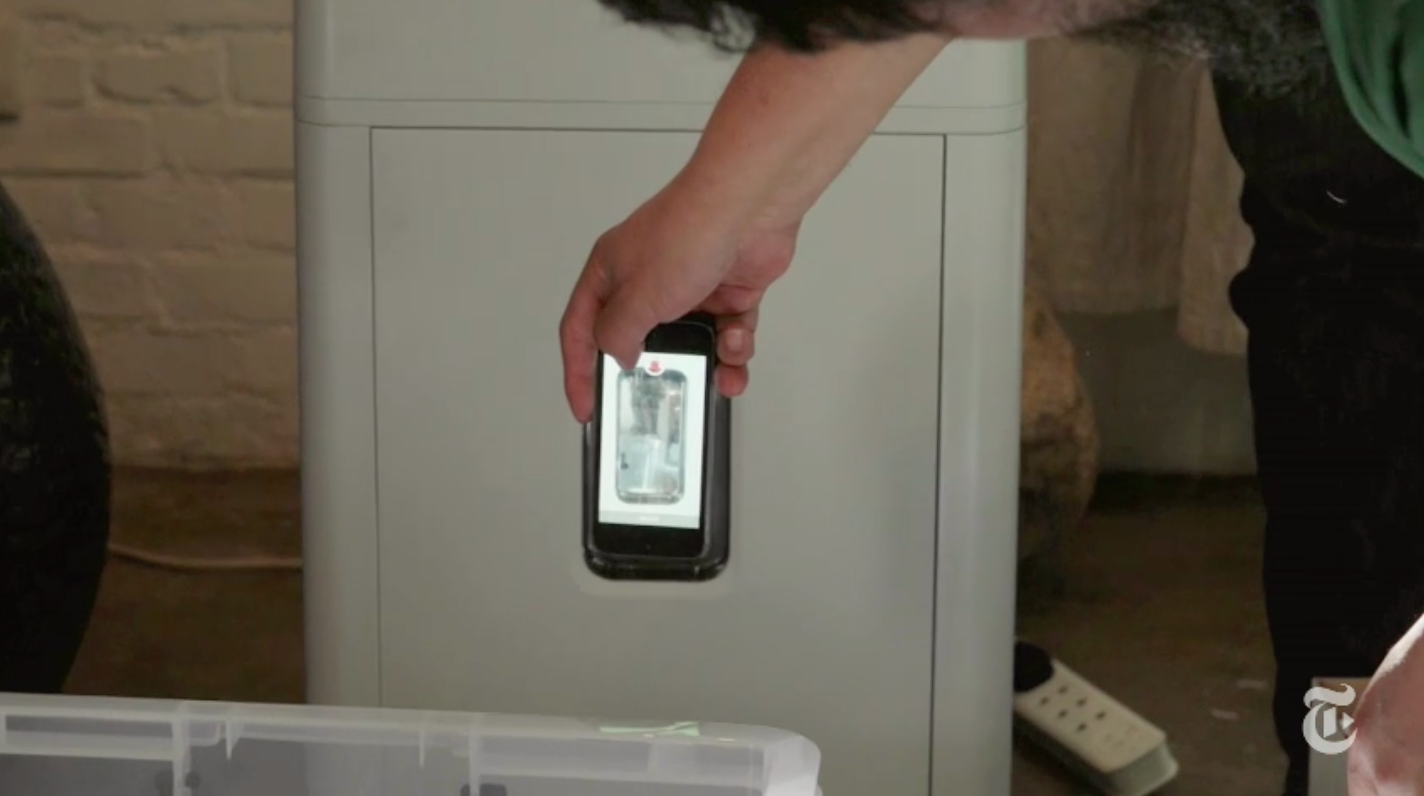
Still from The Art of Dissent. Ai Weiwei films the shredding of the documents. Photo: The New York Times
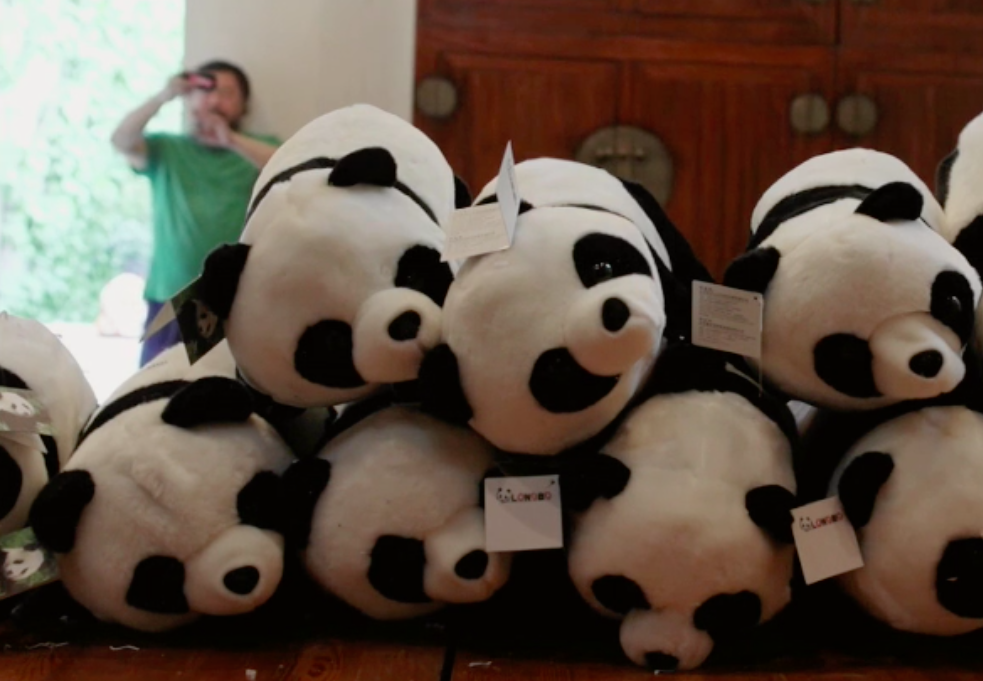
Still from The Art of Dissent. The pandas with Ai Weiwei filming in the background. Photo: The New York Times
Panda to Panda is an example of ethico-political subversion, in which authority is undermined in a number of ways. First, the project in its totality is a complaint against government surveillance and state power. As Ai, Appelbaum, and Poitras were working on the project, they continuously filmed each other. Some of the material has been shared on social media, thereby engaging their followers. In her The New York Times article on the project, Poitras writes that they have created a zone of hyper surveillance. With the constant filming they emphasize and visualize the surveillance they are under: while they film each other, they are also watched by the surveillance cameras placed in front of Ai’s studio by the Chinese authorities. There is a constant awareness of always being under watch.
Second, the pandas also have a symbolic meaning. In The New York Times Poitras calls the title of the project “the synthesis of two terms created by dissident cultures”. Where Appelbaum likes to take direct action, Ai rather uses symbolism to make his point. And where Appelbaum aims to spread information, Ai tries to find the hidden, deeper meaning in ordinary objects. From Appelbaum’s frame of reference, Panda to Panda is a variation on peer-to-peer communication, a means of communication in which there is no hierarchy and that allows all peers to interact in an equal way. This system is seen as a philosophy of egalitarian human interaction on the Internet. This reference also materializes the goals of the movement. From Ai’s frame of reference, the pandas satirically reference popular culture: in China, the secret police, the “government spies” that also surveil Ai, are often referred to as pandas. It is common for elements of popular culture to become mixed with social movement cultures and to sometimes be twisted by movements. From Ai and Appelbaum’s collective reference, the shredding of the documents is a clear expression of resistance against the state oppression they both experience. Taking the original stuffing out of the pandas and re-stuffing them with documents of surveillance programs can be explained as an internalization of censorship. And by placing the data on a micro SD card in the pandas, the artwork performs the practical function of spreading the information in the documents, something the privacy movement has in various ways taken risk to do.
Poitras’ short film about the project, The Art of Dissent, adds an extra dimension to the project; capturing and historicizing different aspects of the movement. During the Seven on Seven conference Poitras explained that the goal of her work is to bridge the divide between our intellectual understanding and an emotional understanding of things like torture, occupation, and surveillance. This can be perceived in The Art of Dissent, when Ai and Appelbaum explain their harrowing experiences with surveillance and oppression. This also clearly shows that the art is based on personal experiences of the artists. It makes the story very emotional and personal, which makes it easy for activists to identify with and experience a shared strength. The film has an implicit and yet very clear way of showing the privacy movement’s ideas, values, and concerns to both insiders and outsiders to the movement.
Anything to Say?
Anything to Say? A Monument of Courage (2015) is a life-size bronze sculpture by American author Charles Glass and Italian artist Davide Dormino. The sculpture portrays three men: Julian Assange, Edward Snowden, and Bradley Manning (who we now know as Chelsea Manning). The three men each stand on a chair, a fourth chair is left empty. This fourth chair is meant for other individuals to stand on, to enable them to stand with the whistleblowers and freely express themselves. Anything to Say? has its own Twitter accountFollow Anything to Say?'s journey on its Twitter account. where followers can follow the realization, unveiling, and journey of the sculpture. The sculpture has never been placed in a typical museum context: it was unveiled at Alexanderplatz in Berlin in and has been traveling since.
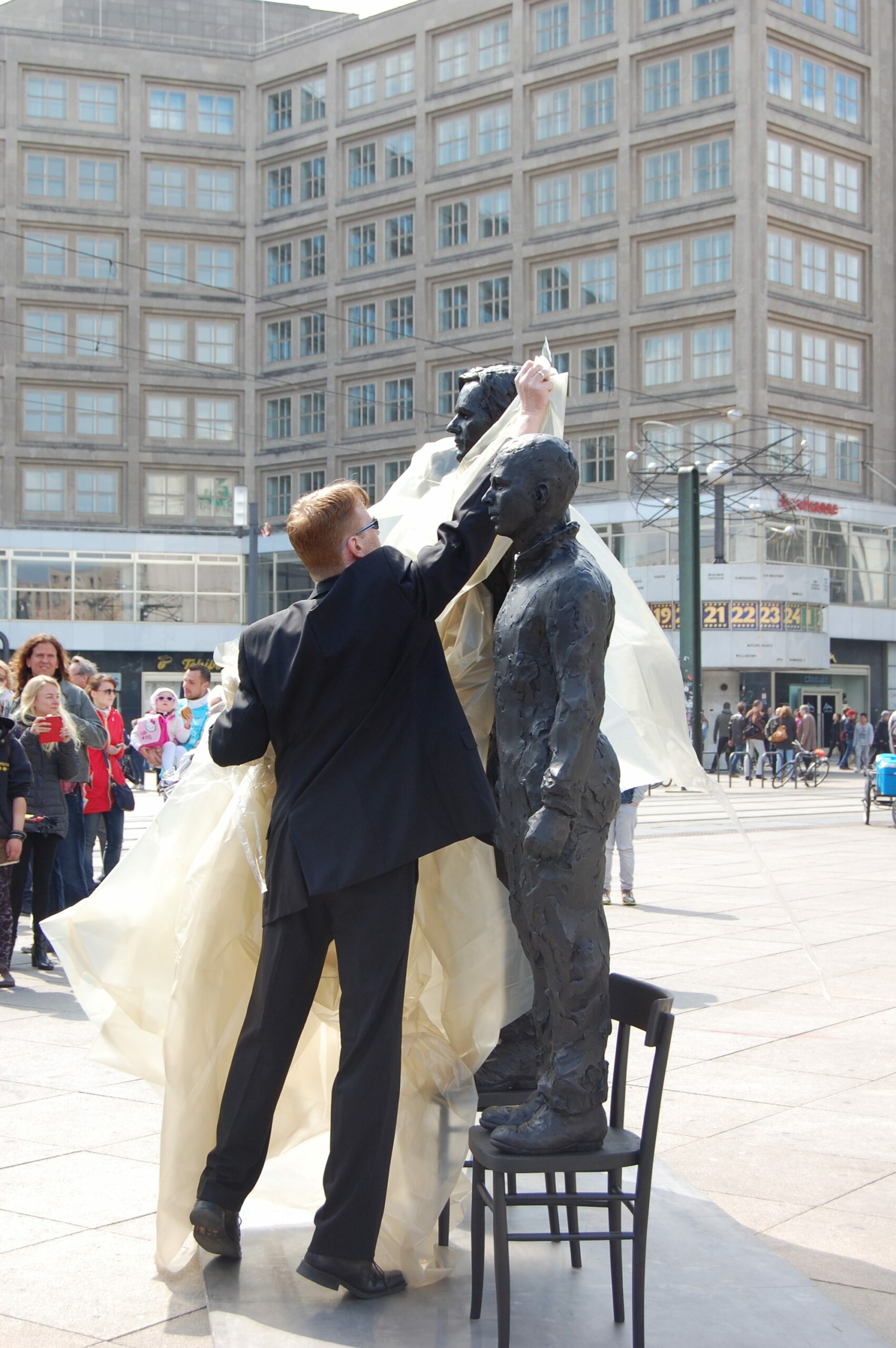
Patrick Bradatsch unveils the sculpture at Alexanderplatz in Berlin. Photo: Loes Derks van de Ven
An analysis of Anything to Say? demonstrates a number of ways in which art functions to strengthen the privacy movement. Taking a stand and expressing your thoughts does not come naturally to everyone; it takes a certain amount of courage – as the sculpture's subtitle A Monument of Courage indicates. By inviting individuals to stand on the fourth, empty chair, the sculpture encourages them to do the same as whistleblowers: to step out of their comfort zone and become visible. All three men in the sculpture are dressed in similar outfits, evoking a sense of equality and strength and creating a strong sense of collectivity. Words expressing thoughts on surveillance, oppression, and freedom of speech can be very powerful; inviting the audience to speak makes them not only feel the strength of the group, but also makes them experience their own strength. In addition, welcoming everyone to stand on the empty chair can bridge a gap between audience members. Young or old, rich or poor, German or foreigner, part of the movement or not: the sculpture gives the audience a reason to connect. Furthermore, here as in the case of Panda to Panda, the sculpture carries out some of the beliefs of the privacy movement, informing individuals within as well as outside of the movement.
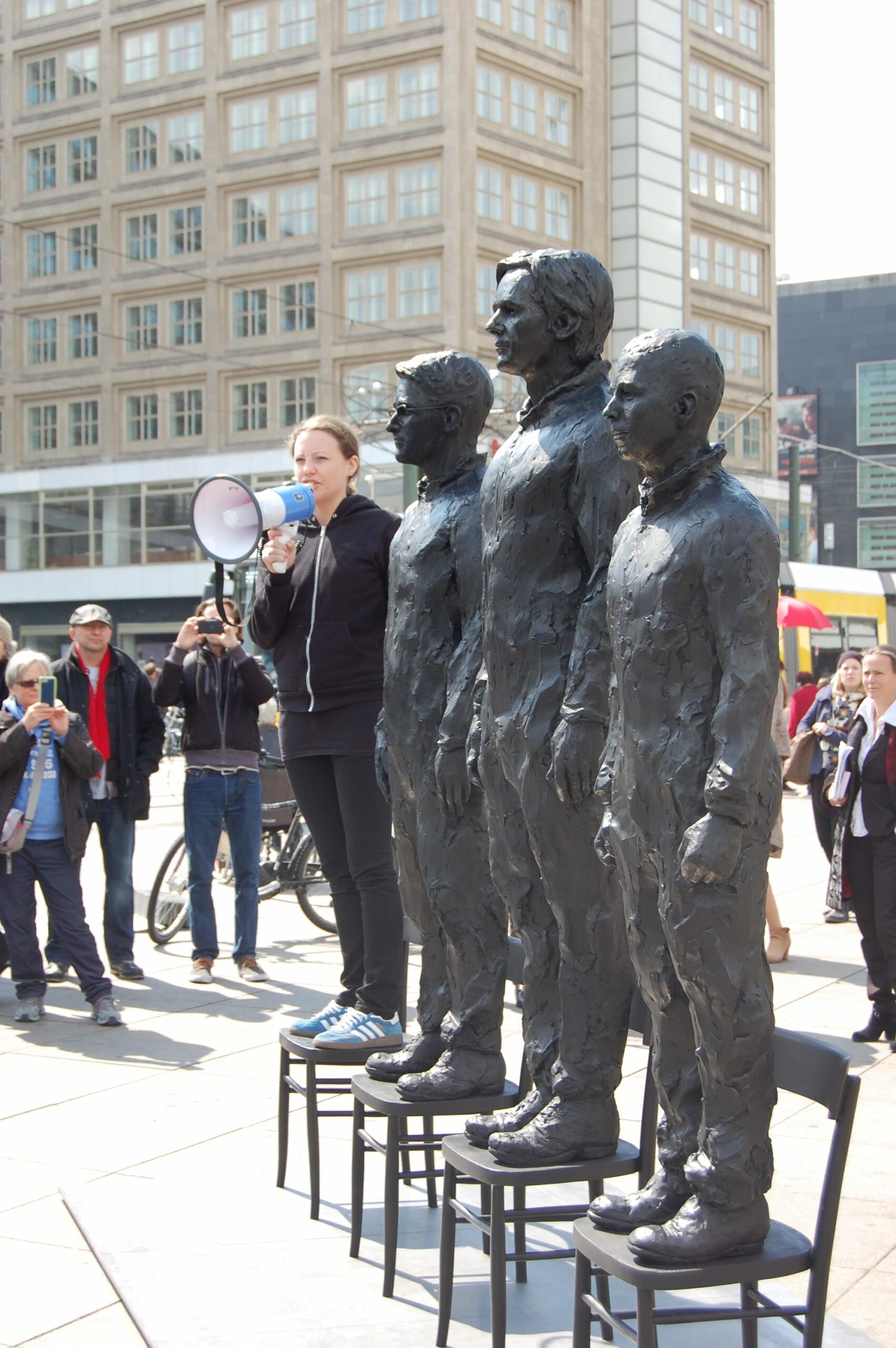
Sarah Harrison takes the fourth chair at the unveiling of Anything to Say? Photo: Loes Derks van de Ven
Anything to Say? does not only highlight the importance of the freedom of speech and the freedom of information; it also comes from the personal experiences of whistleblowers and it shows great respect for them. It encourages the audience to show the same courage as Assange, Snowden and Manning have shown, but the sculpture in itself is also a sign of gratitude towards them. Art does not solely have to express certain movement values, it can function on a more direct level. This is also true for Anything to Say?: the sculpture in itself represents movement ideas and values, but by asking members of the audience to stand on the chair and express themselves, it actually practices free speech and thereby practices one of the privacy movement’s aims.
Activist art is a valuable way for the privacy movement to express what it stands for. Although there is only a relatively small group of activists within the movement that actually creates art, it affects the entire movement; it encourages members within the movement, allows them to experience both their own and the group’s strength, and the personal character of the art reinforces the unity within the movement. In the next, and final article of this series, I will explore protest as an expression of dissent of the privacy movement.
